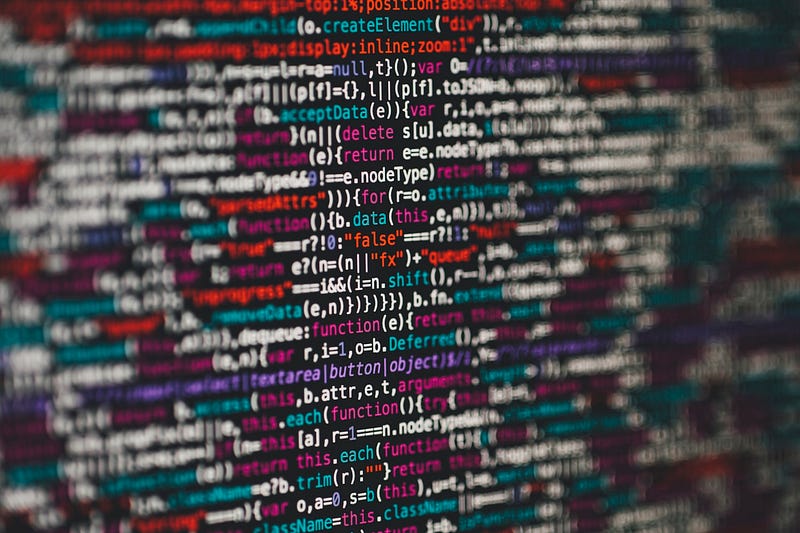Revolutionizing Antibiotic Discovery: AI's Breakthroughs Explained
Written on
Chapter 1: The New Era of Antibiotic Discovery
Researchers at MIT have made significant strides in the search for new antibiotics, leveraging artificial intelligence to radically alter the process. This innovative technology employs neural networks and deep learning to analyze millions of potential therapeutic molecules in a fraction of the time it takes using conventional methods.

Photo by Franki Chamaki on Unsplash
A collaborative effort between MIT and the Broad Institute led to the identification of a molecule capable of effectively combating some of the most critical pathogens threatening public health today. As antibiotic resistance continues to escalate, the need for new antibiotic development has never been more urgent. Traditional discovery methods are often prohibitively expensive and time-consuming, but this new approach could potentially shorten the timeline from years to mere weeks.

Photo by Markus Spiske on Unsplash
While the technology itself isn't entirely new, with deep learning being exemplified in consumer products like Apple’s Siri and Amazon’s Alexa, its application in medicine is groundbreaking. Researchers utilized a database of approximately 2,000 molecules, including FDA-approved antibiotics, to train the neural network to detect additional compounds that exhibit antimicrobial properties. The deep learning system successfully identified molecules with activity against the bacteria E. Coli.
Halicin, as the new molecule was named, emerged from an initial library drawn from the 'Drug Repurposing Hub', which encompasses over 6,000 characterized molecules. A recurring challenge in traditional drug discovery is the repeated identification of the same compounds. To address this, only molecules structurally distinct from known antibiotics were selected for further analysis.
Through iterative cycles of learning, the AI pinpointed one molecule anticipated to possess high efficacy against E. Coli while exhibiting low toxicity in human subjects. Halicin was named after the AI from '2001: A Space Odyssey'. Subsequent laboratory experiments confirmed Halicin's ability to eradicate various bacterial species, revealing that it disrupts bacteria's capacity to maintain a gradient across their cell walls, a process essential for ATP production—the energy currency of all living cells.
In animal models, Halicin demonstrated potent antimicrobial activity against severe resistant infections, including Clostridioides difficile and pan-resistant Acinetobacter baumannii. These pathogens are prioritized by the WHO for urgent antibiotic development.

Photo by Tobias Fischer on Unsplash
A Bigger Database of Possibilities
Following the initial success, researchers turned to a more extensive library of compounds. The ZINC15 database, which contains over 1.5 billion molecules, allowed for the screening of 107 million of these. Remarkably, within just four days, eight active compounds against selected bacterial species, including S. aureus and Klebsiella pneumoniae, were identified. This rapid screening stands in stark contrast to traditional methods, which can take years with much smaller libraries.
Among the identified compounds, two showed broad-spectrum activity against all tested species. One compound, in particular, is structurally unique compared to existing antibiotics and is predicted to have low toxicity in humans, making it a prime candidate for future research.
Impact and Implications
This pioneering method has the potential to transform how antibiotics are discovered. By merging conventional techniques with disruptive technologies, the research team believes they have found an antibiotic that could prove crucial in the ongoing battle against antibiotic resistance.
To illustrate the urgency, the strain of A. baumannii that Halicin targets is already resistant to all known antibiotics, posing a significant threat, especially to immunocompromised individuals and those recovering from injuries. The high infection rates among soldiers, attributed to exposure to varied medical environments, underscore the need for effective solutions.

Photo by Tomasz Frankowski on Unsplash
Looking Ahead
The researchers emphasize that this is merely the beginning. With the demonstrated effectiveness of this AI technology, there are opportunities to enhance the algorithms further, enabling the screening of larger compound libraries. This advancement could lead to the regular discovery of new antimicrobial molecules.
Moreover, there is potential to customize deep learning algorithms to target specific types of bacteria. The ultimate goal is to develop treatments that can be administered directly to infection sites, minimizing the impact on beneficial bacteria within our bodies.
References
- Original Research Paper — A Deep Learning Approach to Antibiotic Discovery
- Artificial Intelligence Yields New Antibiotic
- Drug Repurposing Hub
- Introducing Deep Learning and Neural Networks — Deep Learning for Rookies (1)
- Explained: Neural Networks
- Trends and Exceptions of Physical Properties on Antibacterial Activity for Gram-Positive and Gram-Negative Pathogens
- Acinetobacter in Modern Warfare
- Epidemiology of Infections Associated With Combat-Related Injuries: Journal of Trauma and Acute Care Surgery
- ZINC 15 — Ligand Discovery for Everyone
Chapter 2: The Role of AI in Antibiotic Discovery
Artificial intelligence is revolutionizing the way we discover new antibiotics. This chapter explores the implications of AI in the field.
In this video titled "Scientists Discover First New Antibiotics in Over 60 Years Using AI," the groundbreaking research and its significance are discussed.
The second video, "The Role of AI in Antibiotic Discovery," elaborates on how AI is reshaping antibiotic research and development.